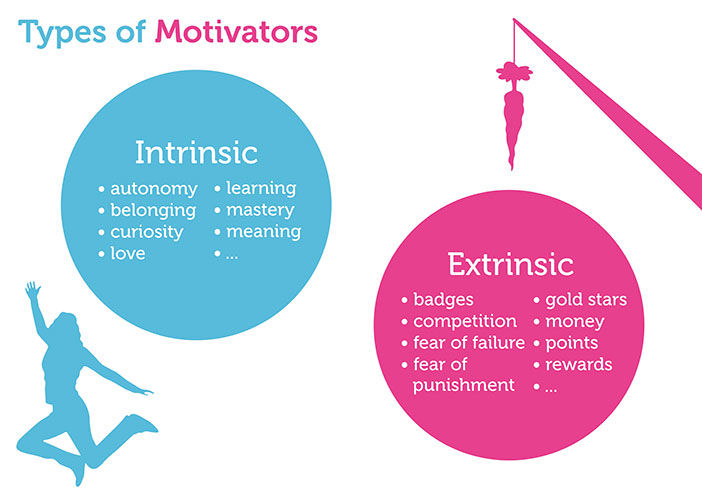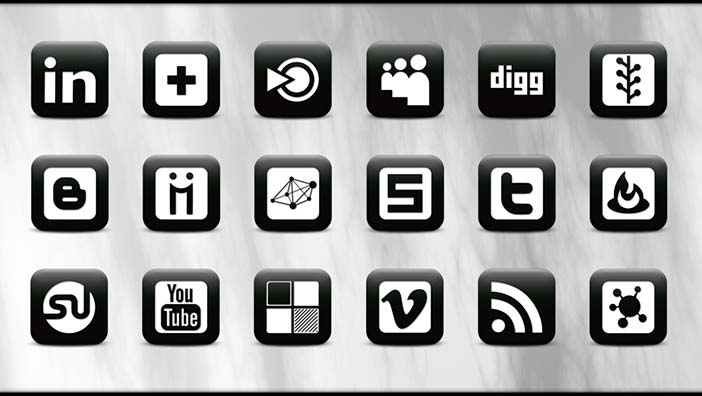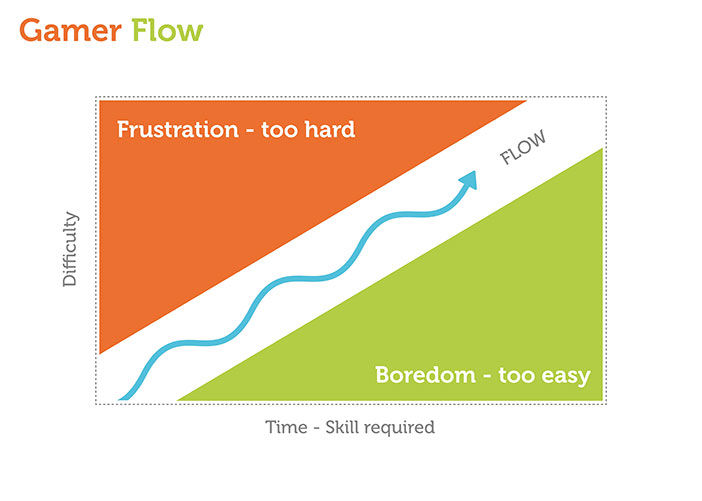"Gamification is 75% Psychology and 25% Technology."
— Gabe Zichermann
Understanding human motivation is an important aspect of Gamification. This chapter will provide a sampling of motivational concepts relevant to gamification
5.1 The Platinum Rule
You may have heard of the Golden Rule that says, "Do unto others as you want done unto you". Based on this rule, you assume that you motivate others the way you want to be motivated. We offer a different approach. In the case of Gamification, we prefer the Platinum Rule that states that "Do unto others what they want done unto them". While there are general ways to motivate and demotivate people, the technique that will be most effective will vary based on the Player Profile. Factors such as generation, gender, and goals play a role in determining the right motivation for your player. For example, the most effective motivational technique will vary between a player who is an eighteen-year-old male, where your mission is to help him master a math concept, and a player who is a forty-year-old female accounting professional, where your mission is to motivate her to complete her bank reconciliation by the end of the week. In other words, understand your player, know your mission and think carefully about which motivational technique will help your player achieve the mission.
5.2 Intrinsic and Extrinsic Motivation
There are two general types of motivation: intrinsic and extrinsic. Intrinsic motivation refers to internal motivations such as autonomy, mastery and meaning. Extrinsic refers to external motivational techniques such as money, trophies etc.
 Courtesy of Janaki Kumar and Mario Herger. Copyright: CC-Att-ND (Creative Commons Attribution-NoDerivs 3.0 Unported).
Courtesy of Janaki Kumar and Mario Herger. Copyright: CC-Att-ND (Creative Commons Attribution-NoDerivs 3.0 Unported).
Figure 5.1: Intrinsic and extrinsic motivation
Daniel Pink (footnote 1), the author of Drive, conducted research at MIT and found that extrinsic motivational techniques are effective for simple, rote tasks. However, when the task requires higher cognitive functions or innovations, extrinsic factors are no longer effective. In fact, they may be de-motivators. Therefore, for complex problem-solving tasks, people are motivated by a sense of autonomy, mastery, and meaning. This is an important factor to keep in mind when introducing gamification into the enterprise.
5.3 More research on motivation
Here are pointers to more research on motivation that could be helpful to you in your gamification endeavors:
5.3.1 Four types of fun
Fun is an important part of gamification and it is interesting to study the existing research on it. Nicole Lazzaro, founder of XEODesign, categorizes fun into four types:
Nicole presents her research on Fun in this insightful info graphic: http://nicolelazzaro.com/wp-content/uploads/2012/03/4_keys_poster3.jpg
5.3.2 B.J. Fogg's Behavior Model
B.J. Fogg presents his Psychology of Persuasion at http://www.behaviormodel.org/. He presents a model called the Fogg Behavior model that states that for a certain behavior to happen, you need Trigger, Ability and Motivation. For example, if you need your employee, customer or partner to do something, you need to ensure that all three factors are addressed. They need to receive a trigger (notification or alert with a call to action), they must have the ability to take this action (resources and time), and finally, they must be motivated to take action. He further states that to troubleshoot a lack of action, first address the trigger and ability before trying to address the motivation.
For example, if you want your employees to donate a million dollars to a company's pledge drive, and the donations are not where you want them to be, first check if they received the information about the campaign (via an email, for example), then address the ability (is the donations website working? Does it have a fast response time? Does it take too steps to complete? Are we asking for too much? Try asking for a reasonable amount $10 — $20 in addition to the overall goal of a million). Once you have addressed the trigger and ability, and if you still do not see results, you can motivate them to donate by explaining the importance of the cause and the benefit it will bring. All too often, people tend to believe that their employees do not care for the cause (lack of motivation), when they may not have received the email in the first place (trigger).
5.4 Curated list of Motivational Drivers
Motivational drivers, discussed below, have applicability beyond digital technology. They are based on observations on what motivates people in the real world, and drawing from this knowledge to design engaging experiences in the virtual world.
Here is a curated list of behaviors that drive motivation. This is not meant to be an exhaustive list, but rather a good start to leverage existing research on our natural psychological tendencies to create engaging gamified experiences.
5.4.1 Collecting
We enjoy collecting — trading cards, coins, stamps, antique wristwatches, cars or friends on Facebook. Some collections may have monetary value, e.g. trading cards, while other collections may be symbolic of social status, e.g. friends on Facebook. Once we get started on a collection that comes in a "set", we have the urge for "Set Completion". If the set is infinite, we are motivated to keep collecting for the joy it brings us. In some cases, we may compare our collections to others and feel the urge to compete.
5.4.2 Connecting
We long to be part of something larger than ourselves. This could mean connecting to other people to be part of a community, or connecting to a cause to be part of something larger and meaningful. We join clubs of various sorts to connect with people like us and have meaningful shared experiences. It validates our existence and makes life more enjoyable.
 Courtesy of WebTreatsETC. Copyright: CC-Att-SA (Creative Commons Attribution-ShareAlike 3.0 Unported).
Courtesy of WebTreatsETC. Copyright: CC-Att-SA (Creative Commons Attribution-ShareAlike 3.0 Unported).
Figure 5.2: Connecting using social media
5.4.3 Achievement
We get great satisfaction from achievement, no matter what our Bartle player profile (footnote 2). If we are challenged, we are, more likely than not, motivated to try hard to achieve success. When we do, we get a positive psychological feedback that makes us want to do it again. There are some subtle factors to pay attention to. If the challenge is too difficult or too easy, we may not be as motivated by achievement as we would be if the challenge were just the right level of difficulty.
We do not expect to win every time. A variable schedule of achievement or a chance to win may be enough of a motivator to make us try. Lottery players play for the chance to win even if they know intellectually that the odds of winning are not high.
5.4.4 Feedback
We like to receive feedback. This could be as simple as the small nods we get when we talk to people. It communicates, "I heard you. I am paying attention. What you are saying is worth listening to". It motivates us to continue talking to this person. A digital example is Amazon sending us an instant confirmation email when we place an order. It communicates, "We received your order. It is safe with us". It enhances our sense of security and wellbeing.
Not receiving any feedback can be extremely demotivating. If you are talking to someone and they remain impassive, you eventually stop talking, since you are not sure if the other person is listening to you or understands you. Software that gives you no feedback when you perform an action is significantly less enjoyable to use than one that does.
5.4.5 Self-Expression
We are entering an era of hyper-personalization enabled by technology. Companies like Nike are offering customers the ability to specify the exact sizes, features, colors, and styles of their shoes (footnote 3). Players of online games spend time customizing their avatars, from eye and skin color and body shape to accessories like earrings, hats and gloves, to control how they are viewed by other players.
5.4.6 Reciprocity
Many of us have had the experience of walking into a store, accepting a "free" sample, and feeling compelled to make a purchase out of a sense of reciprocity. Organizations such as the March of Dimes, Cystic Fibrosis Foundation, World Wildlife Fund, Easter Seals and the American Diabetes Foundation send free address labels to potential donors to leverage this motivational driver as a fund raising technique.
5.4.7 Blissful Productivity
Mihaly Csikszentmihalyi (pronounced MEE-hy CHEEK-sent-me-hi-ee), a distinguished professor of Psychology and Management at Claremont Graduate University, is the director of Quality of Life Research Center and has done pioneering work researching human strengths such as optimism, motivation and responsibility. He defined the concept of Flow as "The mental state of operating in which a person in an activity is fully immersed in the feeling of energized focus, full involvement and the success in the process of the activity". When a task is too difficult, it causes people to be anxious. When a task is too easy, it causes boredom. When the task is just right, we are in a state of heightened focus and immersion, or in other words a state of Flow (footnote 4).
 Courtesy of Janaki Kumar and Mario Herger. Copyright: CC-Att-ND (Creative Commons Attribution-NoDerivs 3.0 Unported).
Courtesy of Janaki Kumar and Mario Herger. Copyright: CC-Att-ND (Creative Commons Attribution-NoDerivs 3.0 Unported).
Figure 5.3: The concept of Flow introduced by Mihaly Csikszentmihalyi
Video game players experience this sense of flow when the game is the right level of difficulty for their skill. Games offer levels so users can graduate to increasing difficulty levels as their skills improve. Business software can benefit from incorporating the concept of levels to enable their users to achieve this sense of flow.
5.5 Summary
Understanding human motivation is an important part of creating an effective gamification strategy. Students of gamification could benefit from studying the existing research on motivation. In this chapter, we have curated a list of motivational drivers that we believe are a good place to start. They are collecting, connecting, achievement, feedback, reciprocity, and blissful productivity.
5.6 Insights from SAP Community Network
In their 2006 book The Geek Gap Bill Pfleging and Melinda Zetlin describe clearly what motivates developers as compared to business people. Developers' motives include learning and mastery, curiosity about new technologies, respect and loyalty towards peers, and generally a playful disposition. They need to stay current with technological trends, or risk becoming obsolete. These trends can include niche technologies that could be used productively in business applications. They value peer recognition over monetary rewards.
The above research was validated by the typical SCN users' behavior. They shared their lessons from projects, they prepared step-by-step guides for the community assembled FAQs, evaluated new technologies, and responded to questions with incredible speed.
The motivational drivers that apply to SCN are connecting with other developers, showcasing their expertise via self-expression, and achieving peer recognition.
To be continued at the end of next chapter

